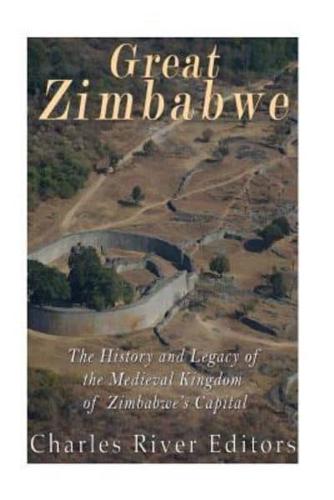Publisher's Synopsis
*Includes pictures
*Includes historical accounts of Great Zimbabwe
*Includes online resources and a bibliography for further reading
The modern history of Africa was, until very recently, written on behalf of the indigenous races by the white man, who had forcefully entered the continent during a particularly hubristic and dynamic phase of European history. In 1884, Prince Otto von Bismark, the German chancellor, brought the plenipotentiaries of all major powers of Europe together, to deal with Africa's colonization in such a manner as to avoid provocation of war. This event-known as the Berlin Conference of 1884-1885-galvanized a phenomenon that came to be known as the Scramble for Africa. The conference established two fundamental rules for European seizure of Africa. The first of these was that no recognition of annexation would granted without evidence of a practical occupation, and the second, that a practical occupation would be deemed unlawful without a formal appeal for protection made on behalf of a territory by its leader, a plea that must be committed to paper in the form of a legal treaty.
In the meantime, in 1867, as Europe was awakening to the potential of Africa, a German-American hunter and explorer by the name of Adam Render happened to stumble upon an extensive complex of stone-built ruins on Mashonaland's central plateau that proved, upon brief examination, to be the surviving remnants of some great and ancient civilization. This immediately struck Render as improbable, and the following season, he guided Karl Mauch, the respected German explorer and geographer, to the site. Mauch, too, was astonished at the spectacle. Although half-buried under rubble and thoroughly overgrown, it was quite clear that there lay an archeological discovery of major significance. The question he asked himself in the absence of any other comparable monument, was who had built it and where they were now.
Bearing in mind the tenor of the times, Karl Mauch could hardly venture the theory that any indigenous African society was capable of such architectural prowess, even in the darkest recesses of antiquity-such a theory would have been simply too implausible to contemplate. The amaNdebele, although manifestly a powerful military nation, lacked even the basics of an advanced civic or artistic capability. An attempt to propose the debased and malingering Mashona, those miserable hut dwellers of the plains, might have been responsible for constructing such a masterpiece would have solicited such gales of popular defamation, Mauch certainly lacked the courage to suggest it.
What Theodore Bent encountered was a sprawling complex in various stages of submersion and heavily overgrown, but quite definitely in three distinct complexes. The first of these was a hilltop fortification which came to be known as the Acropolis, overlooking a scattered assemblage of walls and avenues, somewhat discernible, beyond which lay the masterpiece of the composition. Bent named this the Great Enclosure, a name that remains to this day. Central to this was a large conical tower, clearly without practical application, and therefore, some sort of a ceremonial piece, the object of which he could hardly guess. The wall surrounding the enclosure was of a dry construction method, standing as high as 37 feet in places, wide at the base, narrowing toward the top, and decorated on the leading face by an inlaid chevron pattern.










